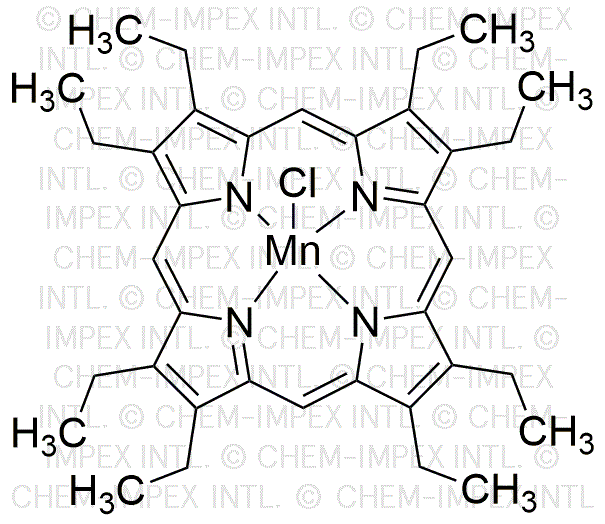Manganese(III) 2,3,7,8,12,13,17,18-(octaethyl)porphyrin chloride is widely utilized in research focused on:
- Catalysis: This compound serves as a catalyst in various organic reactions, enhancing reaction rates and selectivity, particularly in oxidation processes.
- Biomedical Applications: It is explored for its potential in drug delivery systems and as a contrast agent in magnetic resonance imaging (MRI), offering improved imaging capabilities.
- Environmental Science: The compound is used in studies related to pollutant degradation, helping researchers develop methods for environmental remediation.
- Material Science: It plays a role in the development of advanced materials, including sensors and electronic devices, due to its unique electronic properties.
- Photodynamic Therapy: This chemical is investigated for its effectiveness in photodynamic therapy, providing a targeted approach to cancer treatment with minimal side effects.
General Information
Properties
Safety and Regulations
Applications
Manganese(III) 2,3,7,8,12,13,17,18-(octaethyl)porphyrin chloride is widely utilized in research focused on:
- Catalysis: This compound serves as a catalyst in various organic reactions, enhancing reaction rates and selectivity, particularly in oxidation processes.
- Biomedical Applications: It is explored for its potential in drug delivery systems and as a contrast agent in magnetic resonance imaging (MRI), offering improved imaging capabilities.
- Environmental Science: The compound is used in studies related to pollutant degradation, helping researchers develop methods for environmental remediation.
- Material Science: It plays a role in the development of advanced materials, including sensors and electronic devices, due to its unique electronic properties.
- Photodynamic Therapy: This chemical is investigated for its effectiveness in photodynamic therapy, providing a targeted approach to cancer treatment with minimal side effects.
Documents
Safety Data Sheets (SDS)
The SDS provides comprehensive safety information on handling, storage, and disposal of the product.
Product Specification (PS)
The PS provides a comprehensive breakdown of the product’s properties, including chemical composition, physical state, purity, and storage requirements. It also details acceptable quality ranges and the product's intended applications.
Certificates of Analysis (COA)
Search for Certificates of Analysis (COA) by entering the products Lot Number. Lot and Batch Numbers can be found on a product’s label following the words ‘Lot’ or ‘Batch’.
Numéro de catalogue
Numéro de lot/série
Certificates Of Origin (COO)
This COO confirms the country where the product was manufactured, and also details the materials and components used in it and whether it is derived from natural, synthetic, or other specific sources. This certificate may be required for customs, trade, and regulatory compliance.
Numéro de catalogue
Numéro de lot/série
Safety Data Sheets (SDS)
The SDS provides comprehensive safety information on handling, storage, and disposal of the product.
DownloadProduct Specification (PS)
The PS provides a comprehensive breakdown of the product’s properties, including chemical composition, physical state, purity, and storage requirements. It also details acceptable quality ranges and the product's intended applications.
DownloadCertificates of Analysis (COA)
Search for Certificates of Analysis (COA) by entering the products Lot Number. Lot and Batch Numbers can be found on a product’s label following the words ‘Lot’ or ‘Batch’.
Numéro de catalogue
Numéro de lot/série
Certificates Of Origin (COO)
This COO confirms the country where the product was manufactured, and also details the materials and components used in it and whether it is derived from natural, synthetic, or other specific sources. This certificate may be required for customs, trade, and regulatory compliance.


